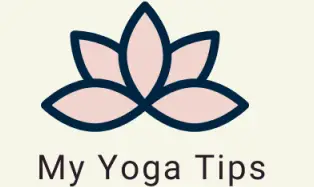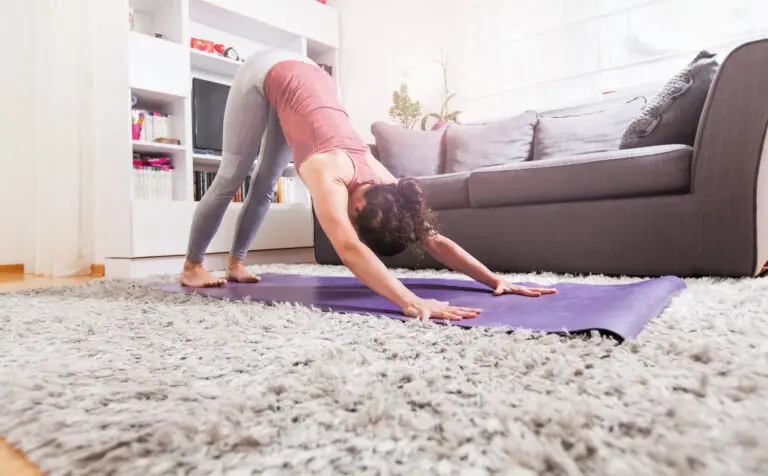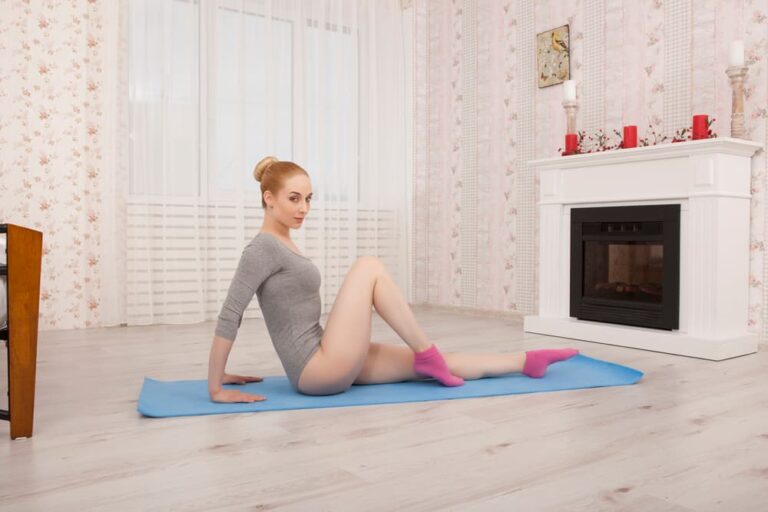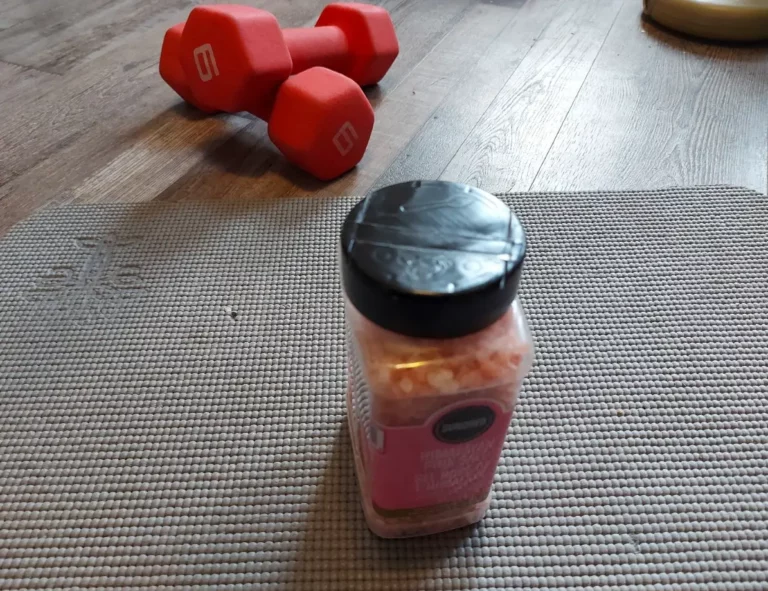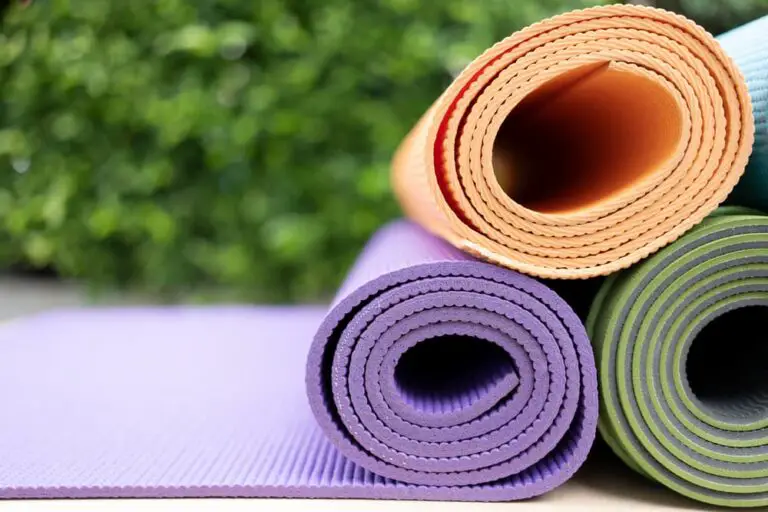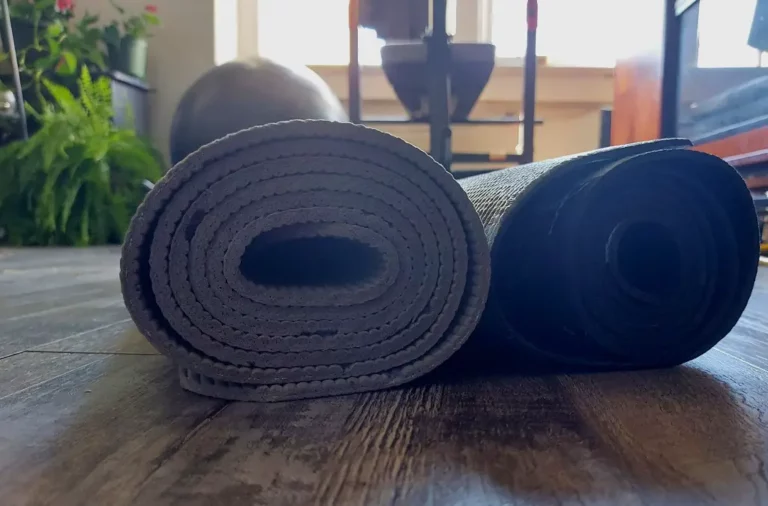Yoga Mats Vs Exercise Mats: Any Real Difference?
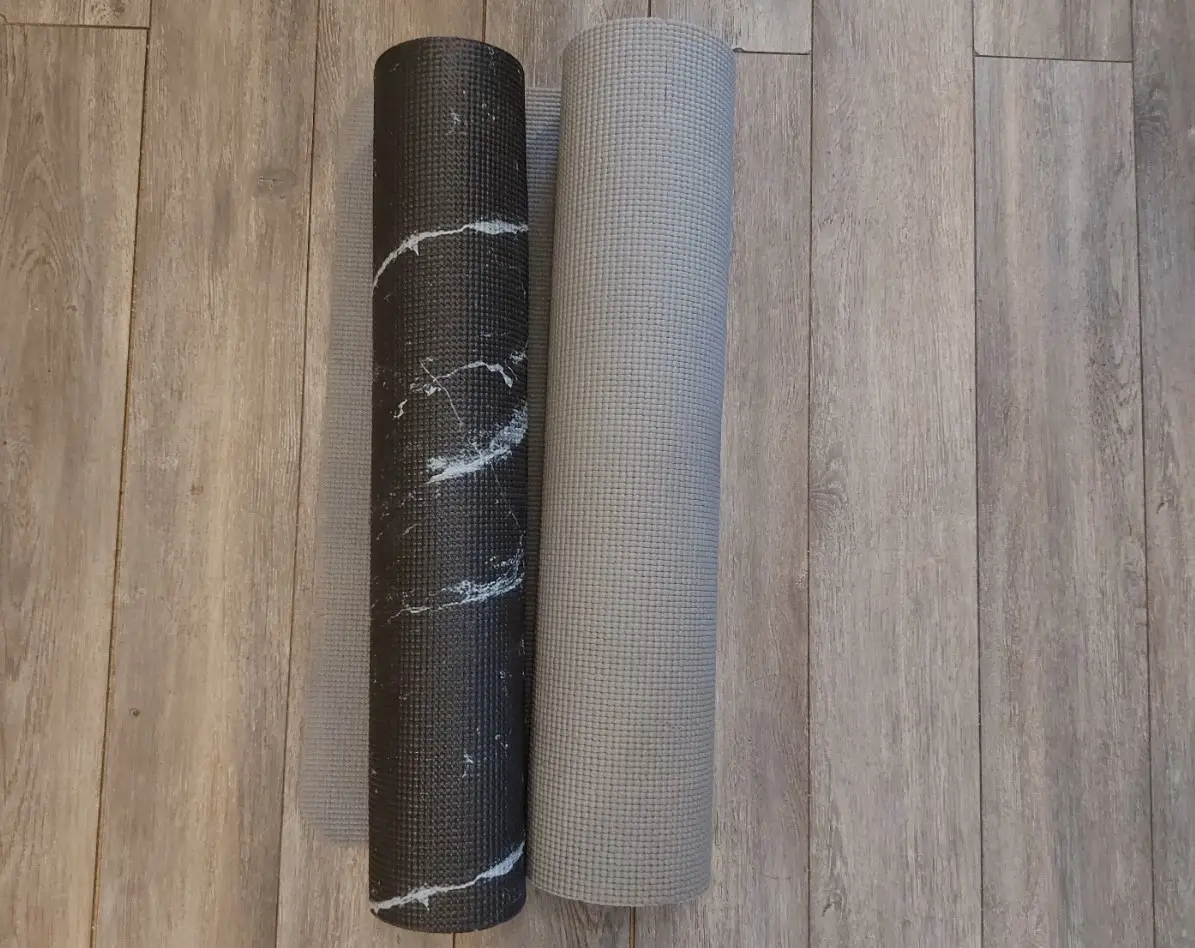
There are a variety of exercise mats available for weighted workouts, Pilates, yoga, and other exercises. In your quest to buy a mat, it would be a good idea to know the difference between yoga and exercise mats. Many companies advertise mats as either suitable for “yoga” or “exercise,” so is there a real difference?
Yoga mats and exercise mats are not the same. Yoga mats are typically thinner with non-slip and cushioning functions for low-impact movements and postures. Exercise mats are thicker formore cushioning and shock absorption for higher impact activities.
Companies design yoga and exercise mats according to their purpose. Not everyone (myself included) can or wants to have two different mats to suit both types of activities. Therefore, it is essential to review the differences before purchasing. The following will help you in making your decision.
Differences Between Yoga Mats And Exercise Mats
This table summarizes the main points that make up the differences between yoga and exercise mats. The main differences between yoga and exercise mats are according to the types of activity, the purpose of the mat, thickness, material, and size.
| Yoga Mats | Exercise Mats | |
| Type of activity | Support low-impact yoga positions | Support lowand high impact exercises |
| Purpose | Non-slip and cushioning function | Shock-absorption and cushioning |
| Thickness | Thin;¼ inch-1 inch | Thick; 1-3 inches |
| Material | PVC or eco-friendly materials | PVC or rubber |
| Size | 24 inches wide, 68 inches long | 24-48 inches wide, 68-98 inches long |
The difference in yoga and exercise mats lies in the difference of purpose between these two forms of activity. A yoga session is typically more low impact compared to an exercise-based workout.
For example, jumping usually involves many exercises, such as burpees or jumping jacks. A yoga session involves more movements in stillness in different positions.
For most yoga postures, protection of the joints against the floor is vital. The material needs to offer enough cushioning to prevent bruising or injuries, but at the same time, the mat can’t be too thick to interfere with stability.
The material must be non-slip, as many yoga postures rely on sturdy hand and feet positions that shouldn’t move to maintain the posture.
The purpose of exercise mats is also to provide cushioning for the hands and knees for some floor activities. However, it’s more important for shock absorption for the higher-impact exercises, like jumping.
The thickness of yoga mats can vary, depending on how portable and storable you need them to be. In general, they are thinner than exercise mats. Very thin mats cannot handle more high-impact yoga, such as power yoga. Personally, I find a slightly thicker yoga mat more comfortable, but it is usually heavier and more difficult to transport.
The thickness of general exercise and gym mats is relatively thicker than yoga mats. They typically start at 1 inch and can be up to 3 inches thick. The mats are thicker because you can do various workouts on an exercise mat, mostly high-impact, which requires a good amount of absorption from the mat.
Most yoga mats are made from PVC (Polyvinyl Chloride), making them quite durable. Companies focused on environmentally friendly materials use other materials such as recycled rubber, bamboo, jute, or organic cotton. Exercise mats are also made from PVC (closed-celled PVC with a vinyl cover), but some are made from rubber.
There is some difference between yoga and exercise mats’ size (width and length). Exercise mats have a more extensive range in size. The sizing of yoga mats seems standard, but some can be slightly longer to allow the hands or elbows and feet to be on the mat in positions like a plank.
Can An Exercise Mat Be Used For Yoga?
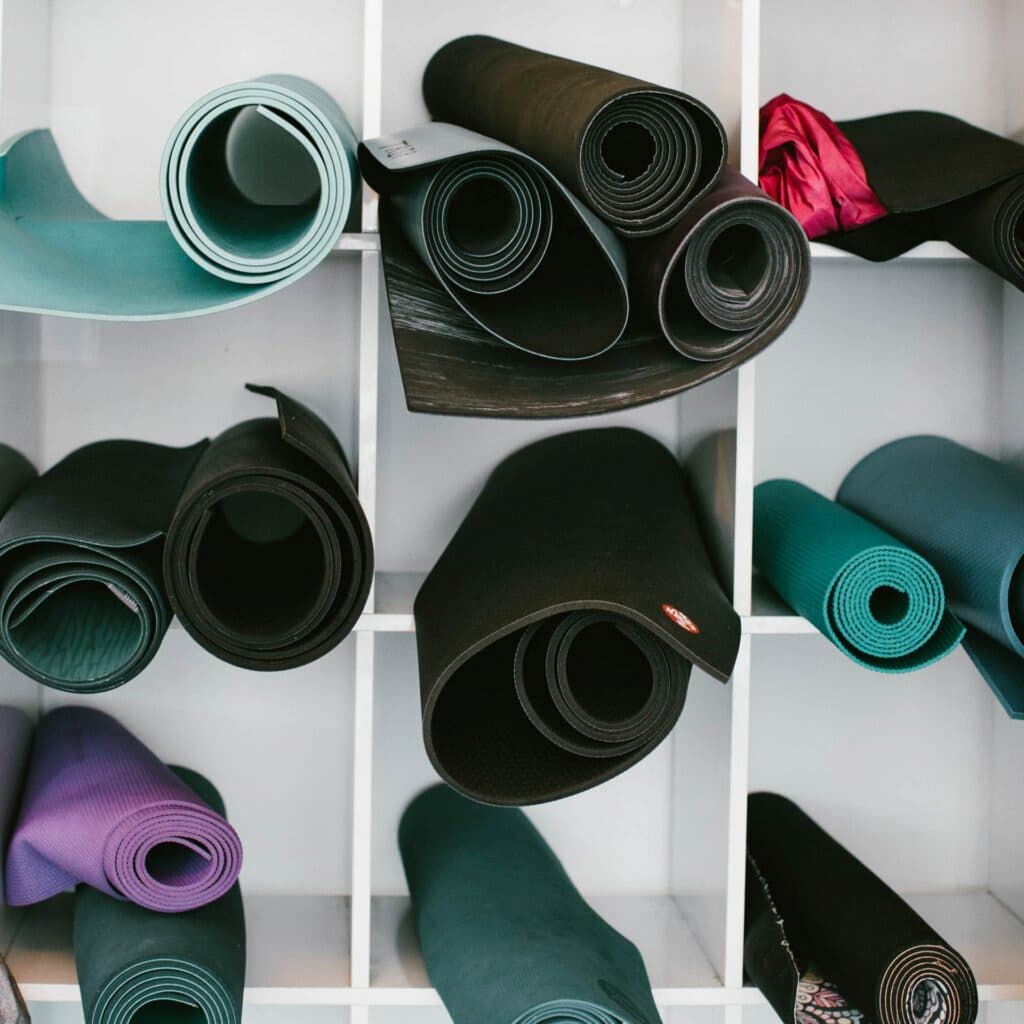
You could use an exercise mat for yoga. In fact, some people use an exercise mat for yoga practice. However, it may be a good idea to invest in a proper yoga mat if you plan to take your yoga practice seriously.
For one, the cushioning from the exercise mat is very good to protect your knees and elbows. However, the problem is that the exercise mat’s thickness and “foam” quality do not give a lot of stability for many yoga postures. A very thick can be dangerous, as stability is critical for single hand or leg poses.
Which Mat Should You Choose For Yoga?
The mat you choose to buy or use depends on the activity you want to do. If you know you will be doing more high-impact workouts, then a simple exercise mat is a way to go! Of course, the best situation is to have both types of mats available if your focus is on two kinds of workouts.
However, if you only want to use one type of mat, consider some factors. The level of comfort you want – usually, a thicker mat is more comfortable, but be careful not to choose a very thick one if you’re going to do some yoga.
The size of the mat also plays a role. A more petite person may opt for a smaller mat. If you prefer to always have your hands and feet on the mat with some space to move, then a bigger mat is a good choice.
Durability is an essential factor, as you don’t want to be buying a new mat every few months. Look into the type of materials that the mat is made out from. PVC is a prevalent material – for both yoga and exercise mats – and is quite durable. Many people do not like PVC and prefer to go with rubber or eco-friendly options.
Learn more!! see our article Tips To Choose The Best Yoga Mat for more information.
Conclusion
There is a fundamental difference between yoga and exercise mats. The difference has to do with the purpose of the mat. Yoga mats are designed for low impact postures and movements and therefore are thinner, non-slip, and cushioning.
Exercise mats provide what you need for your higher impact activities such as jumping and sit-ups by being thicker and cushioned for optimal shock absorption. They allow for various different types of workouts.
